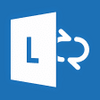Homer is a free cross-platform SIP softphone with video support. It can also be used for playback/streaming of audio/video
Homer is a free cross-platform SIP softphone with video support. It can also be used for playback/streaming of audio/video
Homer Conferencing is a versatile communication tool designed to cater to both individual and business needs, offering a robust set of features for video conferencing, streaming, and broadcasting.
Feature-Rich Video Conferencing
Homer Conferencing stands out with its ability to support an unlimited number of participants in a live video conference, making it a scalable solution for businesses of any size. Unlike many of its counterparts, Homer does not restrict the user count, which can be beneficial for large-scale meetings or webinars.
The application's peer-to-peer communication capability allows direct connections between users, bypassing the need for an infrastructure. However, for those who prefer or require a more structured setup, it also offers full support for SIP servers. The flexibility in connectivity ensures that users can choose the method that best fits their organizational requirements.
High-Quality Streaming and Broadcasting
In addition to its conferencing capabilities, Homer Conferencing excels in its streaming and broadcasting features. Users can stream both video and audio from files or hardware devices to other conference participants. This functionality is further elevated with the unique feature of broadcasting a local audio or video file during a conference call, effectively allowing one to replace their live camera feed or microphone input. This can be particularly useful when sharing pre-recorded content is necessary or preferable.
The software also allows for screencasting, including the option to broadcast a live desktop view, which can be ideal for presentations or collaborative work sessions.
Advanced Network Protocol Support
Networking is where Homer Conferencing indeed showcases its technical prowess. It supports both IPv4 and IPv6 protocols automatically, choosing the best option based on the environment. Beyond the standard TCP and UDP transport protocols, it also accommodates alternative protocols like SCTP and UDP-Lite. However, the availability of these advanced features may depend on the operating system in use, which could limit some users based on their current infrastructure.
Intended for Advanced Users
The complexity and breadth of features in Homer Conferencing suggest that it is designed with advanced users in mind. Individuals who possess substantial knowledge of audio/video streaming and SIP conferencing will find the software highly adaptable to their needs and capable of supporting experiments with various network protocols.
Usability and Performance
Given its advanced feature set, Homer Conferencing may have a steeper learning curve for those unfamiliar with technical aspects of audio/video streaming and network protocols. The user interface may require some acclimatization, but once mastered, the performance is generally reliable and efficient.
Pros
- Supports an unlimited number of participants in video conferences
- Peer-to-peer connectivity and SIP server support
- Streams and broadcasts video/audio from files or devices
- Capable of screencasting and broadcasting live desktop views
- Advanced network protocol support, including IPv4/IPv6, SCTP, and UDP-Lite
Cons
- May be complex for users without advanced knowledge of streaming and SIP
- User interface can be challenging for new users to navigate
- Advanced features are dependent on operating system capabilities
In conclusion, Homer Conferencing is a robust software solution tailored to meet the needs of users who require a comprehensive set of features for audio and video communication, without the limitations imposed by many other conferencing tools. While it offers great potential for those with the expertise to fully utilize its capabilities, casual users might find it less accessible due to its technical nature.


